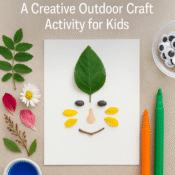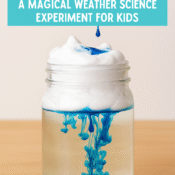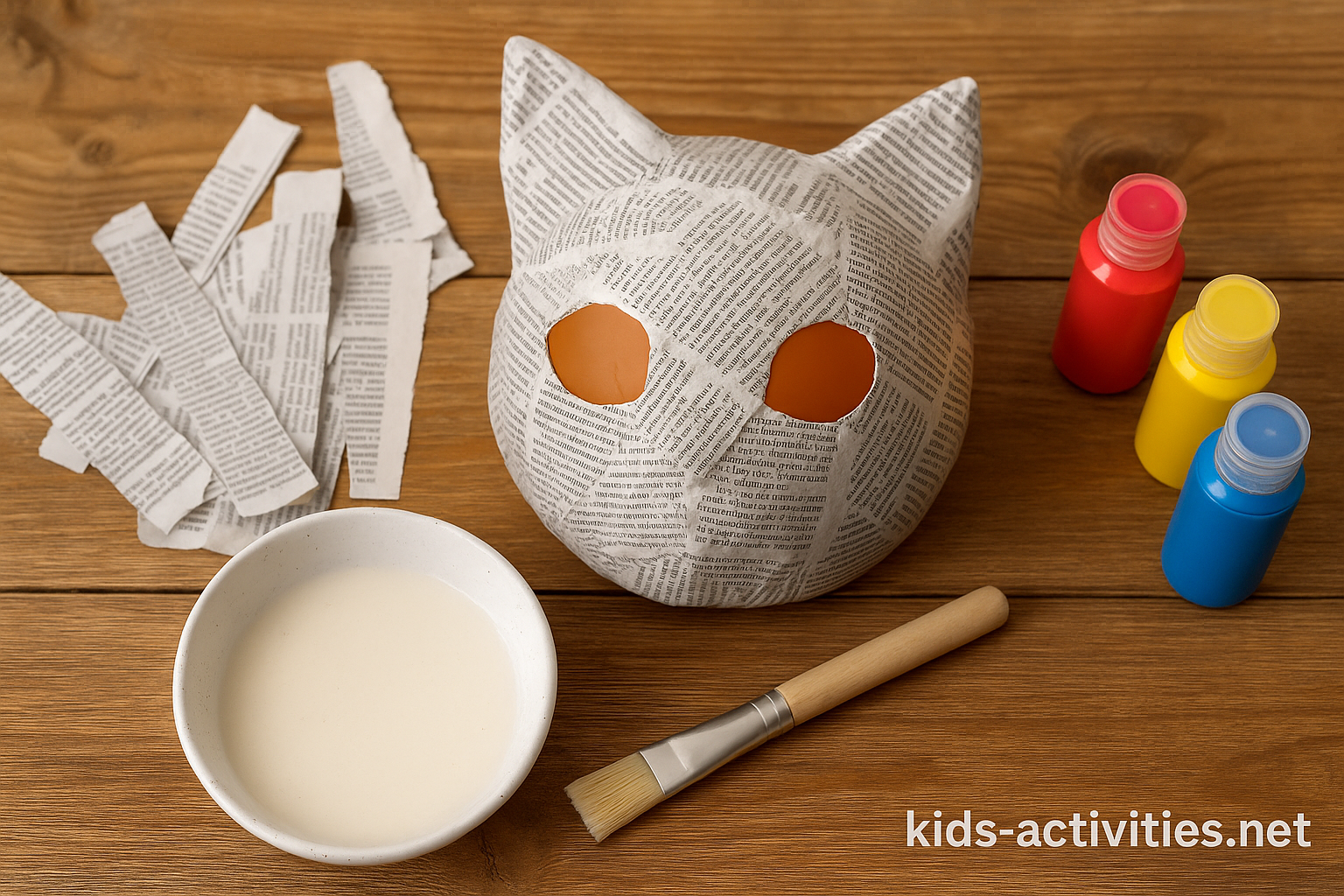
Paper Mache : Crafting Creativity from Scratch
Why Kids Need Messy, Tactile Projects
In an age filled with screens and structured schedules, many children are losing the chance to explore sensory-rich, messy, and hands-on creative activities. Enter paper mache – a timeless craft that combines glue, paper, and imagination to create anything from animal sculptures to story masks. Beyond fun, paper mache develops patience, fine motor skills, and a love for process-oriented learning.
In this blog, you’ll find:
- A simple theory behind paper mache
- Step-by-step paper mache projects
- Quick variants for younger kids
- Resource links to extend learning
The Sticky Science Behind Paper Mache
Paper mache (from the French papier mâché, meaning “chewed paper”) is an ancient craft technique where torn paper strips are layered with adhesive to form durable, lightweight shapes. It’s a fascinating intersection of chemistry, art, and engineering — all rolled into one.
Educational Benefits:
- Motor Skill Refinement: Tearing, dipping, and layering build hand strength and coordination.
- Process Thinking: Kids learn sequencing and patience through drying and layering.
- Creative Expression: Encourages sculptural thinking beyond flat drawings.
Try it as part of your Art & Craft Lab or integrate it with themed learning like science fairs or historical diorama building.
Core Activity: Create Your Own Paper Mache Animal Mask
Here’s a classroom- and home-friendly project that allows every child to express their inner artist (and wild animal!).
Materials You’ll Need:
- Old newspapers or scrap paper
- White flour or PVA glue
- Water
- Balloon or base mold
- Paint and brushes
- Safety scissors
- Optional: tissue paper, glitter, yarn
Step-by-Step Instructions:
1. Prepare the Paste
Mix 1 part flour with 2 parts water for a natural paste, or dilute PVA glue with water (1:1). Stir until lump-free.
2. Build the Form
Blow up a balloon as the mask base. Sketch where the eyes and mouth will go.
3. Tear and Layer
Tear newspaper into strips. Dip each strip into the paste, wipe off excess, and layer across the balloon. Repeat with 3–4 layers. Leave to dry overnight.
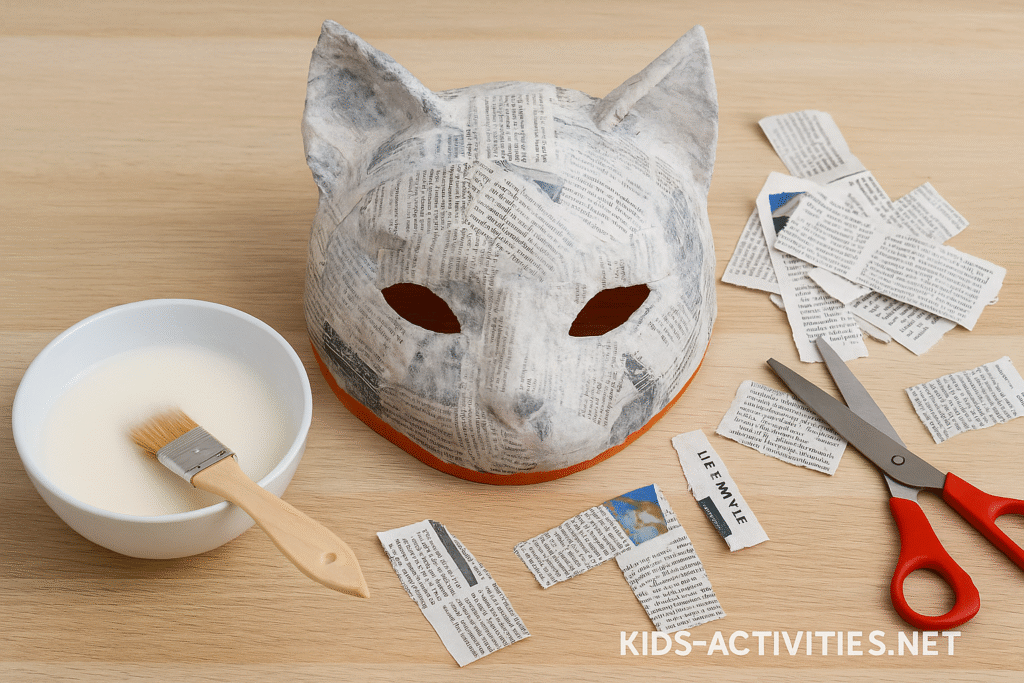
4. Add Features
Add ears, noses, or horns using cardboard or twisted paper rolls. Cover with additional paper mache to integrate.
5. Dry and Decorate
Once fully dry (24–48 hours), pop the balloon, cut eye holes, and decorate with paint, glitter, and extras.
Want a ready-to-print version? Download our Paper Mache Animal Mask Template Pack (PDF).
Quick Variants for Shorter Sessions
If you’re short on time or working with younger kids, try one of these simplified ideas:
Paper Mache Bowls
- Use small plastic bowls as molds
- Cover only the outside
- Paint in rainbow gradients or with handprints
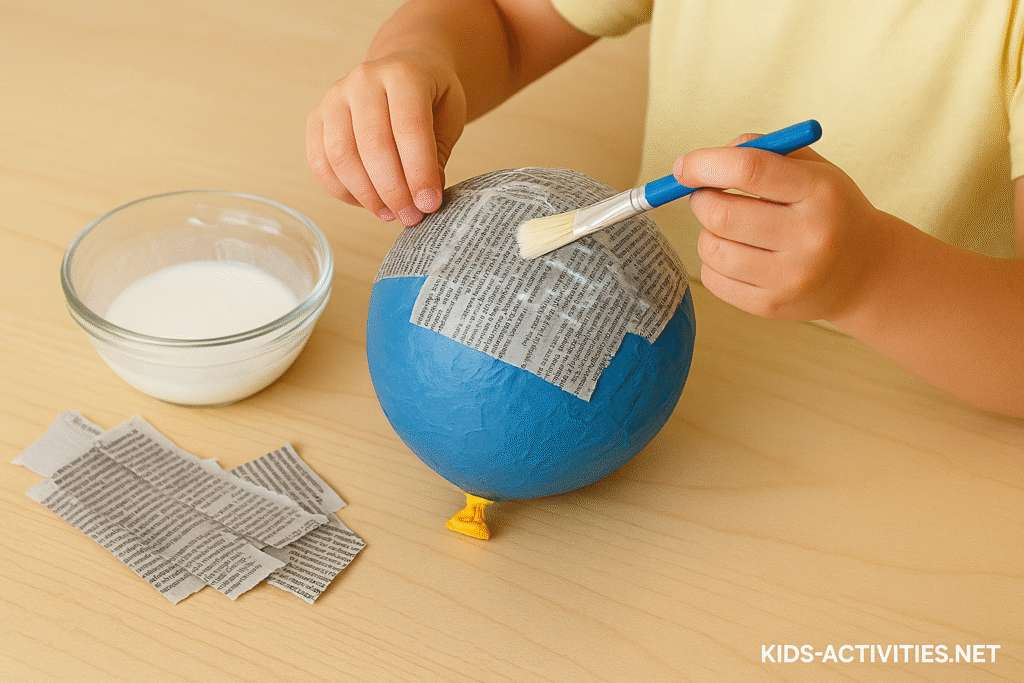
Balloon Monsters
- No cutting or precise features needed
- Just let kids layer paper mache over balloons
- Add googly eyes and silly paint designs
Planet Models
- Great for space-themed weeks
- Use different balloon sizes for planets
- Finish with paint and suspend from string
Pair with our DIY Solar System activity for a fully immersive science-meets-craft lesson.
Clean-Up Tip: Tidy Without Tears
Paper mache is famously messy — and that’s part of the charm. But to help it stay fun:
- Use shower curtains or plastic tablecloths under your workspace.
- Pre-tear paper strips in batches before kids start pasting.
- Keep a wash station or wipes nearby for sticky fingers.
Extend the Learning
Don’t stop at the craft table — turn this hands-on project into a multi-subject adventure:
History Link: Ancient Sculpture
Use paper mache to replicate ancient artefacts like Egyptian masks or Greek amphoras. Great for thematic weeks or school displays.
Storytelling Connection
After making their animal masks, have kids write a short story about their creature’s adventures in a magical forest.
Science Extension
Explore materials science: Why does paper become stiff when dry? Why are layers stronger than single sheets? Perfect for a beginner engineering discussion.
Looking for more ideas? Explore our STEM Archieve Library for related builds and challenges.
Reflections from Parents and Kids
- “I never thought flour and paper could keep my twins quiet for two hours straight.” — Amanda, VIC
- “My daughter used her unicorn mask for three different pretend games this week!” — Tom, NSW
Many families reported extended play beyond craft time — whether reenacting fairy tales, building animal kingdoms, or staging museum exhibits.
Want more ideas like this? Subscribe to our Creative Activities PDF for weekly updates and printables.
Resource List
Included in Our Printable Kit:
- Animal Mask Base Template (PDF)
- Easy Tear Strip Cutting Guide
- Decorative Accessory Templates (ears, horns, snouts)
- Painting Inspiration Sheets
- Drying & Storage Tips Poster
All available on our Free Kids Crafts Resource Page.

Next Up: Turn Your Creations into a Mini Museum!
Set up a living room or classroom “Gallery of Paper Mache Wonders”. Include labels, short descriptions, and let kids “curate” their pieces. It builds confidence and presentation skills, all while celebrating creative effort.
Looking for more immersive projects? Try our DIY Dig Kit to keep the hands-on fun going.
Recommended Activities to Explore Next
- 10 Educational STEM Projects to Repurpose Old Keyboards
- The 72-Hour Plastic Bottle Revival: From Trash to Smart Planter
- Backyard Safari: Nature Exploration for Kids
Curious minds will love more hands-on STEM and nature challenges! Browse these creative learning adventures.


